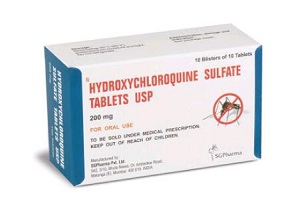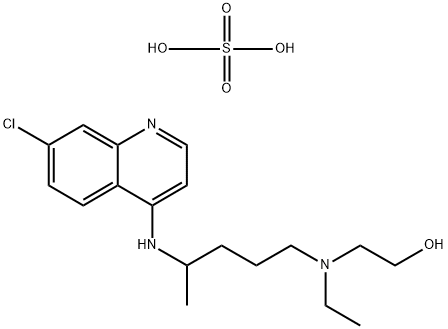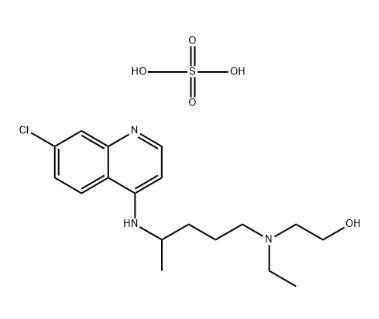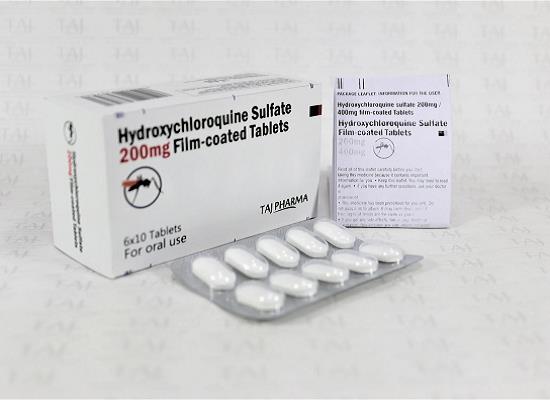What is Hydroxychloroquine sulfate?
General Description
Hydroxychloroquine sulfate (also known as hydroxychloroquine) is an antimalarial medicine approved in the United States for either prevention or treatment of certain types of malaria, lupus erythematosus, and rheumatoid arthritis. It is sold under the brand name Plaquenil and it is also sold as a generic medicine. It is available in tablets of 155mg base (200mg salt).
Hydroxychloroquine sulfate has not been approved for the treatment of COVID-19. It has been used experimentally to treat certain people with COVID-19, including hospitalized patients. Hydroxychloroquine sulfate is being used to try and stop the COVID-19 virus from spreading inside your body. This may help you to get better.
Hydroxychloroquine sulfate is experimental because we do not know if it works for COVID-19. It is not approved by FDA for the treatment of COVID-19, but emergency use has been authorized for adults and adolescents who weigh 50 kg (110 pounds) or more and are hospitalized with COVID-19 if a clinical trial is not available or you are not able to participate in a clinical trial. There is limited information known about the safety and effectiveness (whether this will make you better) of using hydroxychloroquine sulfate for hospitalized patients with COVID-19.
UNDER STUDY FOR COVID-19
Hydroxychloroquine and a related drug, chloroquine, have been under study as possible treatments for COVID-19 (the illness caused by the new coronavirus). However, the FDA has just revoked its emergency use authorization for these two drugs. This is because the drugs may not be effective in treating COVID-19, and their risks may outweigh their potential benefits for this use. Do not use these medications to treat COVID-19 unless your doctor recommends that you do so.
Clinical Use
Hydroxychloroquine sulfate is highly water soluble and exists in two different forms of different melting points. It is readily absorbed on oral administration, reaching peak plasma levels within 1 to 3 hours. It concentrates in organs such as the liver, spleen, kidneys, heart, lung, and brain, thereby prolonging elimination. Hydroxychloroquine is metabolized by N-dealkylation of the tertiary amines, followed by oxidative deamination of the resulting primary amine to the carboxylic acid derivative. In addition to possessing corneal and renal toxicity, hydroxychloroquine also may cause CNS, neuromuscular, GI, and hematological side effects. Hydroxychloroquine sulfate is indicated for the treatment of rheumatoid arthritis, lupus erythematosus, and malaria.
Pharmacology
Antimalarial action: Hydroxychloroquine binds to DNA, interfering with protein synthesis. It also inhibits DNA and RNA polymerases. It’s active against asexual erythrocytic forms of Plasmodium malariae, P. ovale, P. vivax, and many strains of P. falciparum.
Amebicidal action: Mechanism of action is unknown.
Anti-inflammatory action: Mechanism of action is unknown. Drug may antagonize histamine and serotonin and inhibit prostaglandin effects by inhibiting conversion of arachidonic acid to prostaglandin F2; it may also inhibit chemotaxis of polymorphonuclear leukocytes, macrophages, and eosinophils.
Usage&Dosage
Take this medication by mouth, usually with food to prevent stomach upset, exactly as directed by your doctor. The dosage and length of treatment are based on your medical condition and response to treatment. In children, dosage is also based on weight.
To prevent malaria, take this medication by mouth as directed by your doctor, usually once a week on the same day each week. Mark a calendar to help you remember. This drug is usually started 1 to 2 weeks before entering the malarious area. Continue to take it weekly while in the area and for 4 to 8 weeks after leaving the area, or as directed by your doctor. To treat malaria, follow your doctor's instructions.
For lupus or rheumatoid arthritis, take this medication by mouth as directed by your doctor, usually once or twice daily. Your doctor may gradually increase your dose. Once you have been taking the medication for a while and your condition has improved, your doctor may instruct you to lower your dose until you find the dose that works best with the fewest side effects.
If you are also taking a certain drug for diarrhea (kaolin) or taking antacids (such as magnesium/aluminum hydroxide), take hydroxychloroquine at least 4 hours before or after these products. These products may bind with hydroxychloroquine, preventing your body from fully absorbing it.
Symptoms of drug overdose may appear within 30 minutes after ingestion and may include headache, drowsiness, visual changes, CV collapse, and seizures followed by respiratory and cardiac arrest.
Treatment is symptomatic. Empty stomach by emesis or lavage. After lavage, activated charcoal in an amount at least five times the estimated amount of drug ingested may be helpful if given within 30 minutes of ingestion.
Ultra-short-acting barbiturates may help control seizures. Intubation may become necessary. Peritoneal dialysis and exchange transfusions may also be useful. Forced fluids and acidification of the urine are helpful after the acute phase.
Side Effects
Nausea, vomiting, loss of appetite, diarrhea, dizziness, or headache may occur. If any of these effects last or get worse, tell your doctor or pharmacist promptly.
Remember that your doctor has prescribed this medication because he or she has judged that the benefit to you is greater than the risk of side effects. Many people using this medication do not have serious side effects.
Tell your doctor right away if you have any serious side effects, including: slow heartbeat, symptoms of heart failure (such as shortness of breath, swelling ankles/feet, unusual tiredness, unusual/sudden weight gain), mental/mood changes (such as anxiety, depression, rare thoughts of suicide, hallucinations), hearing changes (such as ringing in the ears, hearing loss), easy bruising/bleeding, signs of infection (such as sore throat that doesn't go away, fever), signs of liver disease (such as severe stomach/abdominal pain, yellowing eyes/skin, dark urine), muscle weakness, unwanted/uncontrolled movements (including tongue/face twitching), hair loss, hair/skin color changes.
Drug interactions
Anti-arrhythmics: increased risk of ventricular arrhythmias when hydroxychloroquine administered with amiodarone – avoid concomitant use Digoxin: Hydroxychloroquine sulfate has been reported to increase plasma digoxin levels: serum digoxin levels should be closely monitored in patients receiving concomitant therapy.
Antibacterials: increased risk of ventricular arrhythmias when hydroxychloroquine administered with moxifloxacin – avoid concomitant use.
Ciclosporin: hydroxychloroquine increases plasma concentration of ciclosporin (increased risk of toxicity) .
Antacids: as with chloroquine, antacids may reduce absorption of hydroxychloroquine so it is advised that a 4 hour interval be observed between hydroxychloroquine and antacid dosaging.
Antidiabetic medicines: As hydroxychloroquine may enhance the effects of hypoglycaemic treatment, a decrease in doses of insulin or antidiabetic drugs may be required.
Tamoxifen: may enhance the adverse/toxic effect of Hydroxychloroquine. Specifically, concomitant use of tamoxifen and hydroxychloroquine may increase the risk of retinal toxicity.
You may like
Related articles And Qustion
Lastest Price from Hydroxychloroquine sulfate manufacturers
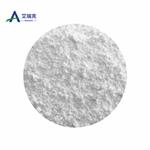
US $0.00-0.00/g2024-04-10
- CAS:
- 747-36-4
- Min. Order:
- 1g
- Purity:
- 99.99%
- Supply Ability:
- 20 tons
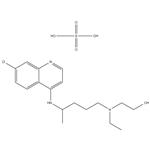
US $8.00-1.00/KG2024-04-09
- CAS:
- 747-36-4
- Min. Order:
- 1KG
- Purity:
- 99%
- Supply Ability:
- g-kg-tons, free sample is available
